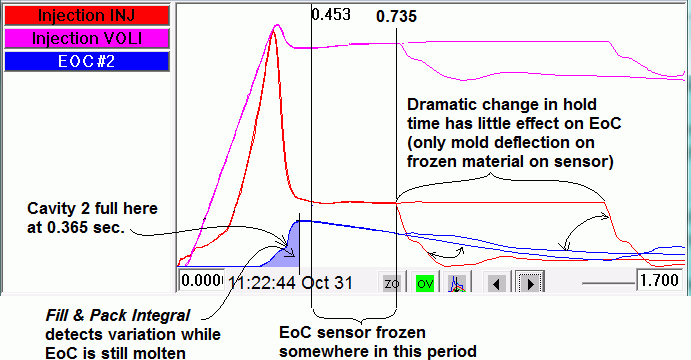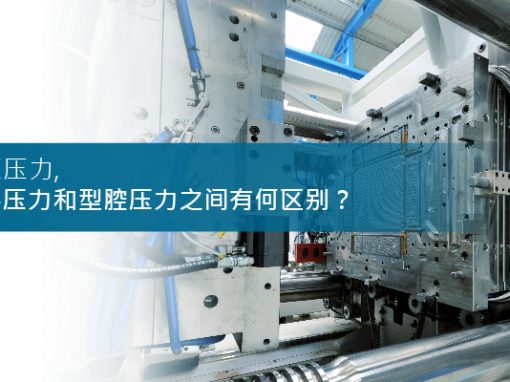Tip of the Day 174: Wherefore “Fill and Pack Integral”?
We have recently seen several customers using the eDART™ summary value “Fill and Pack Integral” for a part quality alarm. This value and “Fill and Pack Time” are most used for thin-wall molding quality alarms. We do not recommend using these for modest aspect ratio or thick parts. In thick-ish, parts the variation in this value is usually so small that more specific values of interest such as Cycle Integral or cavity fill time (“Process Time / Cavity Fill”) should be used for most quality alarms.
Here is why thin-wall quality (usually dimensions) commonly relates to Fill and Pack values.
In a word: freezing.
Suppose we have a PC part .030” ( ¾ mm) thick with a 3” (76 mm) flow length. Even though plastic does not conduct heat well, there is so little of it between the walls that it freezes very fast. Therefore, by the time filling and packing is complete the EoC region is mostly frozen. Often the sensors under frozen material pick up mold deflection which is not an influence on part quality. Consider this graph for explanation.

If the pressurization of the End of Cavity sensor is critical to the part (e.g. for dimensions or even texture) then much of the data after it is frozen will not show any variation. The freezing of the EoC occurs somewhere between 0.453 and 0.735 seconds. We test it more precisely with some other hold pressure adjustements. If we want to know first-hand what happens during packing of this part we should look at the early portion of the curve. The Fill and Pack Integral tells us this.


